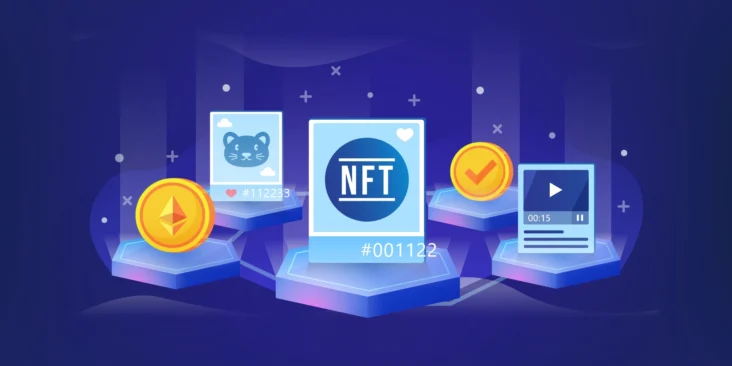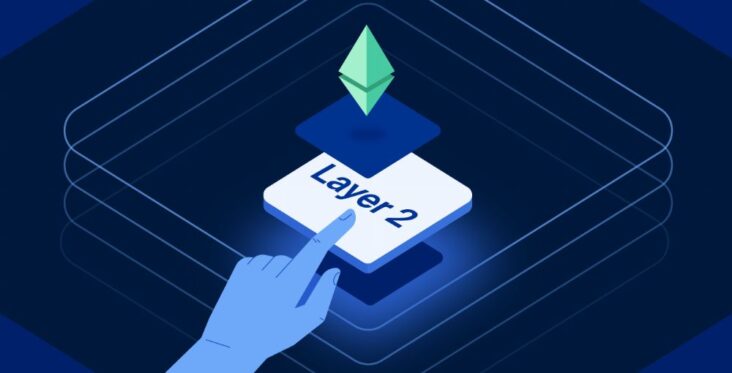Are you tired of struggling to keep up with the innovations in cryptocurrency technology? Look no further – this article will provide an overview of the latest developments in blockchain and beyond, so you can make informed decisions about your investments.
With a focus on understanding the most revolutionary uses of distributed ledger technology, let’s dive into blockchain and beyond.
From Blockchain to DeFi: The Top Innovations Driving Cryptocurrency Forward

Source: analyticsinsight.net
The first and most significant innovation in cryptocurrency technology was the introduction of blockchain. A blockchain is a decentralized and distributed digital ledger that records transactions in a secure and transparent manner. Blockchain technology has played a vital role in the growth of the cryptocurrency industry, providing a secure and reliable way to record transactions without the need for intermediaries.
Another significant innovation in cryptocurrency technology, which is also noted in cryptocurrency reviews, is the rise of decentralized finance (DeFi). DeFi is a new financial system built on top of blockchain technology that allows users to access financial services without the need for intermediaries, such as banks. DeFi platforms enable users to lend, borrow, and trade cryptocurrencies in a secure and transparent manner, without the need for traditional financial institutions.
One of the most significant innovations in the DeFi space is the development of decentralized exchanges (DEXs). DEXs allow users to trade cryptocurrencies without the need for intermediaries, such as centralized exchanges. Instead, trades are executed through smart contracts, which are self-executing contracts with the terms of the agreement between buyer and seller being directly written into lines of code.
The Dawn of Eco-Friendly Cryptos: Revolutionizing Digital Currency with Energy-Efficient Mining
Eco-friendly cryptos, an ingenious amalgamation of cutting-edge technology and environmental consciousness, shimmer with promise. These digital mavericks harness energy-efficient mining techniques that give rise to sustainable, low-impact alternatives to the energy-hungry behemoths of the old.
The eco-conscious shift began with the rise of Proof of Stake (PoS) consensus algorithms, breaking free from the energy-intensive shackles of the once-dominant Proof of Work (PoW) mechanisms. By allowing users to ‘stake’ their cryptocurrency holdings as collateral, PoS secures the network and validates transactions while consuming only a fraction of the energy expended in traditional mining. The celestial dance of PoS has inspired a legion of eco-friendly cryptocurrencies to follow in its wake, each pursuing its unique path to a greener digital universe.
The emergence of green mining pools, powered by renewable energy sources, is yet another beacon of hope in the eco-crypto revolution. By harnessing the elemental forces of sun, wind, and water, these pools defy the energy grid’s gravitational pull and carve out a sustainable path forward for digital currency mining.
The Rise of Non-Fungible Tokens (NFTs) and Their Impact on the Cryptocurrency Industry

Source: apptunix.com
In recent years, non-fungible tokens (NFTs) have emerged as significant innovations in the cryptocurrency industry. NFTs are unique digital assets that are stored on a blockchain and are used to represent ownership of a particular item or asset, such as a piece of art or a collectible. The NFT market has exploded in popularity, with sales reaching millions of dollars for individual items.
The popularity of NFTs has been driven in part by the increasing interest in digital art and collectibles. NFTs allow creators and collectors to authenticate ownership and transfer of these digital assets, making them more valuable and scarce. This has created a new market for artists and content creators who can now monetize their work directly through the sale of NFTs.
NFTs also have the potential to revolutionize the gaming industry. Games can use NFTs to create unique in-game items that can be bought and sold by players. This opens up new revenue streams for game developers and allows players to truly own their in-game assets.
The impact of NFTs on the cryptocurrency industry is significant. NFTs have introduced a new type of asset class that is unique, scarce, and digital. This has expanded the use cases for blockchain technology beyond cryptocurrencies and has driven innovation in the space.
However, there are also concerns about the environmental impact of NFTs, particularly with regard to energy consumption. The process of minting and trading NFTs requires a significant amount of computing power, which can be detrimental to the environment. Additionally, there are concerns about the potential for fraud and counterfeiting in the NFT market.
The Growth of Layer 2 Solutions and Their Role in Scalability and Interoperability

Source: pixelplex.io
One of the biggest challenges facing the cryptocurrency industry is scalability. As the number of users and transactions on blockchain networks increases, the network becomes congested, leading to slow transaction times and higher fees. Layer 2 solutions have emerged as a potential solution to this problem.
Layer 2 solutions are built on top of existing blockchain networks and provide additional functionality to improve scalability and interoperability. These solutions can be used to process a large number of transactions off-chain and then settle them on the main blockchain, reducing congestion and improving transaction speeds.
One of the most popular layers 2 solutions is the Lightning Network, which is built on top of the Bitcoin blockchain. The Lightning Network enables instant, low-cost transactions by processing them off-chain and then settling them on the main Bitcoin blockchain. This significantly improves scalability and reduces transaction fees.
Another layer 2 solution is the Plasma Network, which is being developed by the Ethereum community. Plasma is designed to create a network of child chains that can handle a large number of transactions, which can then be settled on the Ethereum main chain. This approach can significantly increase scalability, making it possible to process thousands of transactions per second.
In addition to scalability, layer 2 solutions also improve interoperability. Interoperability refers to the ability of different blockchain networks to communicate and exchange information with each other. Layer 2 solutions can be used to bridge different blockchains, allowing for seamless communication and data transfer between them.
Conclusion

Source: financedigest.com
In conclusion, cryptocurrency technology has the potential to revolutionize the way we think about financial transactions. Through blockchain technology, cryptocurrencies create an efficient and secure system for conducting a variety of transactions. Beyond cryptocurrency, blockchain technology has a wide array of applications in data storage, smart contracts, and more.






